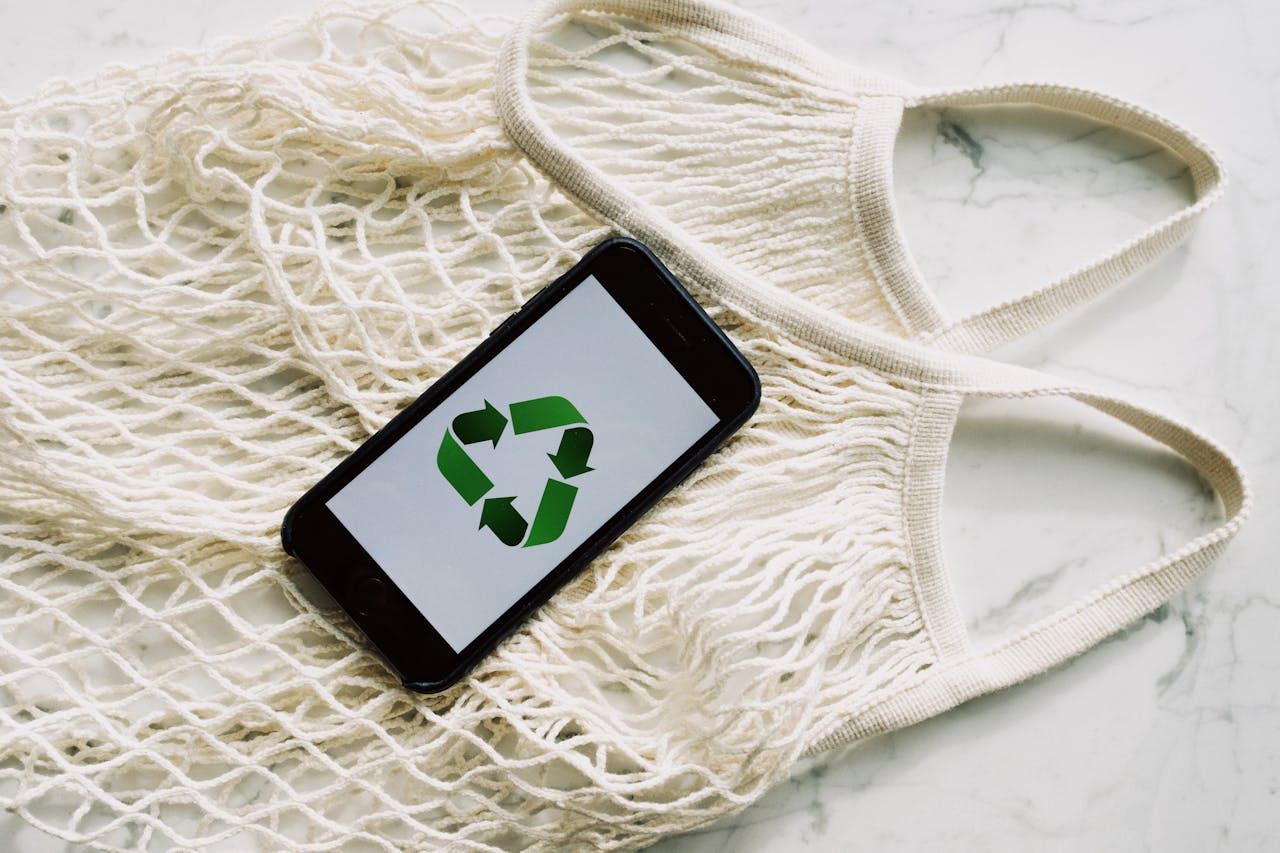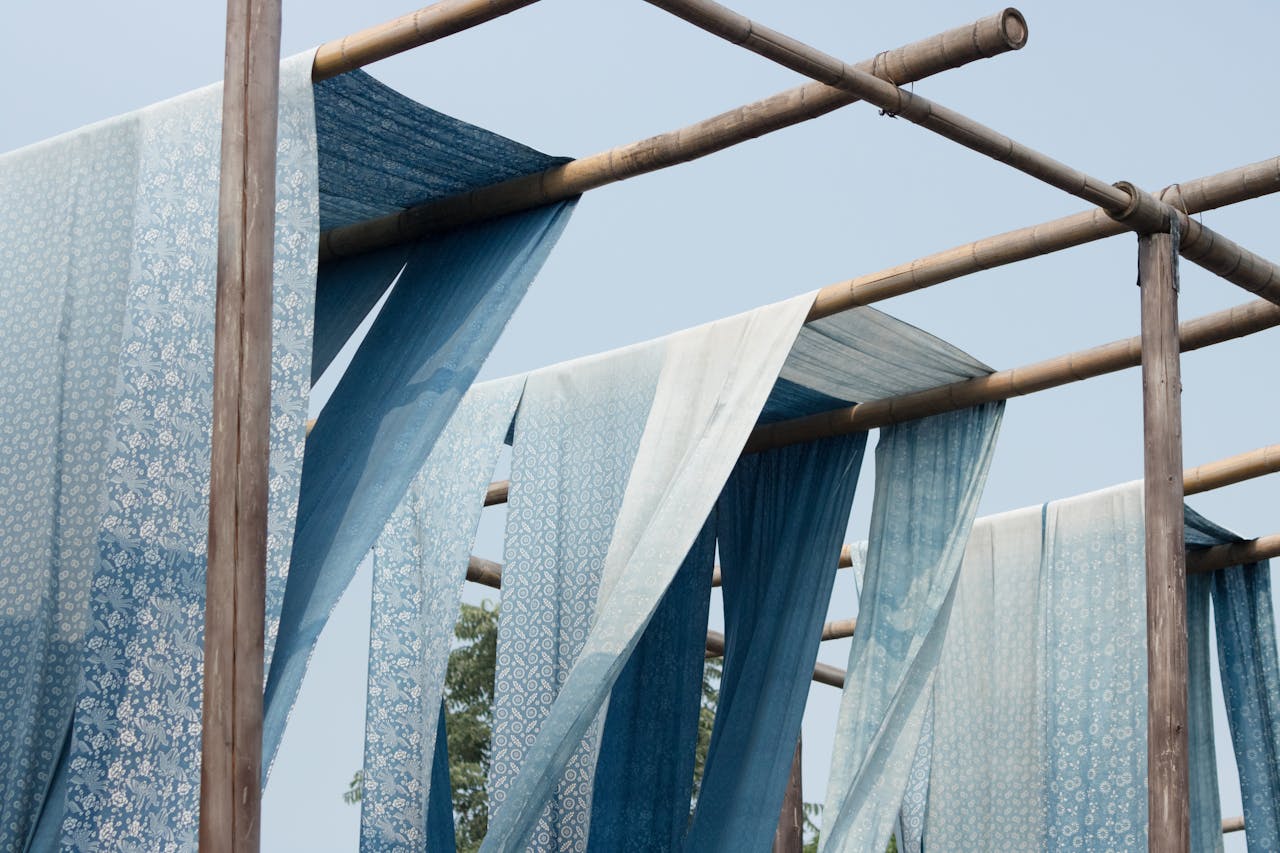What is Circular Fashion?
The “Circular Fashion” concept was developed in 2014 and is based on circular economy and sustainable development. As opposed to the current linear fashion, which is focused on maximizing the production and consumption of clothes, circular fashion focuses on product durability and reduction of garment waste (among other things).
According to the Ellen Macarthur Foundation, every second, the equivalent of a rubbish truckload of clothes is burnt or buried in a landfill. As this has destructive environmental consequences, governments and many brands have become forerunners in creating a more sustainable and long-lasting model.
This is where circular fashion and circular economy generally come into play. The focus in a circular fashion is put on the lifecycle of a product, including:
- Design
- Origin of the materials
- Production
- Transportation
- Storage
… and all the way to the sale. Moreover, with this new model, the product lifecycle includes the user phase and the product’s end of life.
But before deep diving into circular fashion, let’s quickly revisit what circular economy is and why it has become a main topic of discussion in 2023.

What is Circular Economy?
The circular economy is a concept dating back to 1988 and is a framework for system solutions that focuses on pollution, waste, biodiversity loss, and climate change.
In March 2020, the European Commission adopted the new circular economy action plan or CEAP as one of the pillars of the European Green Deal.
The new plan came in response to the new agenda for the EU’s sustainable growth. This transition aims to reduce the pressure on natural resources and improve sustainable growth and job opportunities.
Furthermore, it also comes as a prerequisite for achieving the 2050 climate neutrality target proposed by the EU.
There are three principles of a circular economy:
- Eliminate waste and pollution
- Regenerate nature
- Circulate products and materials
Therefore, the circular economy aims to promote production that makes the smallest carbon footprint feasible and has the least negative effect on the environment. It focuses on waste reduction and material reusability, and recyclability.

The Difference Between Circular vs Linear Economy
The circular and linear economies are two contrasting models that describe how resources are utilized and managed within an economic system.
In a linear economy, resources are extracted, processed into products, consumed, and discarded as waste. This approach follows a “take-make-dispose” pattern, leading to:
- Resource depletion
- Environmental degradation
- Reliance on continuous extraction
On the other hand, a circular economy aims to minimize waste and maximize resource efficiency by promoting the concept of “reduce, reuse, recycle.” The emphasis is on the importance of:
- Designing products for longevity
- Repairing and refurbishing them
- Recycling materials to create new products
In a circular economy, waste is considered a valuable resource, and the goal is to keep products and materials in circulation for as long as possible, thus reducing the need for extraction and minimizing environmental impact.
The circular economy strives for a regenerative and sustainable system where:
- Resources are conserved
- Waste is minimized
- Economic growth is decoupled from resource consumption
A circular economy fosters innovation, promotes the development of renewable energy sources, and encourages adopting sustainable practices across various sectors. The ultimate goal of the circular economy is a more resilient and environmentally friendly future.
What are the Benefits of a Circular Economy
There are several critical benefits of circular economy for the fashion industry that can help transform it into a more sustainable and resource-efficient sector.
Here are some key advantages:
- Resource conservation: The circular economy reduces the reliance on virgin resources by promoting the reuse and recycling of materials. This helps to conserve valuable resources such as water, energy, and raw materials, reducing the environmental impact of fashion production.
- Waste reduction: By encouraging practices like repair, refurbishment, and remanufacturing, the circular economy minimizes fashion waste, diverting items from landfills and incineration. This reduces environmental pollution and mitigates waste disposal’s negative social and health impacts.
- Economic opportunities: Circular fashion creates new business models and opportunities. It fosters the growth of rental and sharing platforms, resale markets, and upcycling initiatives. Furthermore, it improves generating revenue and employment in garment repair, remanufacturing, and recycling areas.
- Enhanced brand reputation: Embracing the circular economy demonstrates a commitment to sustainability, which can boost brand reputation and appeal to environmentally conscious consumers. It can attract a loyal customer base that appreciates responsible practices and supports brands prioritizing social and environmental values.
- Extended product lifespan: By designing products for durability and longevity, the circular economy encourages higher-quality fashion items that can withstand multiple uses and have a longer lifespan. This reduces the need for frequent replacements, saving consumers money and reducing overall consumption.
- Reduced environmental impact: The circular economy reduces the fashion industry’s environmental footprint by minimizing carbon emissions, water pollution, and waste generation. It contributes to mitigating climate change, protecting ecosystems, and preserving biodiversity.
By embracing the circular economy, the fashion industry can transition to a more sustainable and resilient model, addressing traditional linear production processes’ environmental and social challenges.

Image by Feri & Tasos. From Unsplash
How Can Circular Fashion Help Businesses?
By leveraging the benefits of a circular economy, circular fashion brands can reap numerous advantages for their business.
Hence, by implementing circular practices, these brands can differentiate themselves in the market, appealing to eco-conscious consumers seeking sustainable and ethical products.
Circular fashion brands cultivate customer loyalty through take-back programs, repair services, and resale platforms, fostering long-term relationships with individuals who appreciate their products’ extended lifespan and value.
Additionally, adopting circular business models such as rentals or subscriptions generates consistent revenue streams and reduces costs associated with inventory management.
Furthermore, circular fashion brands prioritize transparency and responsible sourcing, enhancing supply chain resilience and mitigating risks related to material scarcity and disruptions.
By embracing circularity, businesses gain access to new markets, tapping into the growing demand for second-hand and upcycled products.
Overall, circular fashion allows businesses to blend effectively:
- Sustainability
- Customer loyalty
- Business success
How is Traceability Enabling Circular Fashion?
Traceability plays a crucial role in enabling circular fashion by providing transparency and accountability throughout the supply chain.
Some of the ways traceability can support circular fashion include:
- Supply chain visibility: Traceability systems allow brands to track and monitor the entire lifecycle of a product, from sourcing materials to manufacturing, distribution, and end-of-life stages. This visibility helps identify inefficiencies, waste, and areas for improvement, enabling brands to make informed decisions and optimize their operations.
- Material traceability: With traceability, brands can accurately trace the origin and composition of materials used in their products. This information is vital for promoting sustainable and responsibly sourced materials. It ensures that materials meet quality standards, environmental certifications, and ethical considerations, supporting the circular economy principles.
- Circular product tracking: Traceability enables the tracking of products throughout their lifespan, facilitating opportunities for repair, refurbishment, and recycling. Brands can retrieve used garments, initiate take-back programs, and redirect them to appropriate channels for recycling or resale. This ensures that products reenter the value chain, extending their lifespan and reducing waste.
- Consumer engagement: Traceability empowers consumers to make informed choices. Traceability fosters consumer trust and confidence by providing visibility into a brand’s production processes and sustainability efforts. This encourages individuals to engage in circular practices, such as buying second-hand or recycling products, contributing to a more circular fashion ecosystem.
By leveraging traceability, brands can:
- Drive transparency
- Ensure responsible sourcing
- Facilitate circular product flows
- Engage consumers in sustainable fashion practices
It paves the way for a more traceable, accountable, circular fashion industry.
PSQR’s traceability solution – Saga, is an example of a flexible, industry and product-agnostic solution. Saga helps businesses comply with regulations, such as the Digital Product Passport, take control over the supply chain, and improve their business operations and customer experience.

What Are The Most Circular Fashion Brands Today?
Although most of the brands are only lately starting to move towards the circular economy, there is still several circular fashion brands that are setting an example for the rest to follow.
We have chosen 5 pioneers regarding sustainability and circularity in the fashion industry to demonstrate how they apply the circular economy model to their daily operations.
Patagonia
Patagonia is a pioneering example of circularity and sustainability in the fashion industry. With a strong commitment to reducing its environmental footprint, the brand emphasizes product longevity through repair and recycling initiatives.
Patagonia’s “Worn Wear” program encourages customers to repair and extend the lifespan of their garments, while their “Common Threads” initiative promotes responsible consumption.
Furthermore, using recycled materials and regenerative practices, Patagonia showcases a holistic approach to sustainability, inspiring other fashion brands to prioritize circularity and environmental stewardship.

Image by Patagonia
The North Face
The North Face is another brand demonstrating a strong commitment to circularity and sustainability.
Through their innovative initiatives like the “Renewed” program, they extend the life cycle of their products by refurbishing and reselling used items.
The brand actively seeks sustainable materials and processes, incorporating recycled materials into their products and reducing waste.
The North Face’s dedication to responsible manufacturing, environmental conservation, and social responsibility makes them a leader in promoting circularity and sustainability in the fashion industry.

Image by EcoTextile
Stella McCartney
Stella McCartney is renowned for their unwavering commitment to circularity and sustainability as a fashion brand.
They have pioneered innovative materials such as vegetarian leather and regenerated cashmere, ensuring cruelty-free and eco-friendly production.
Stella McCartney actively promotes garment longevity through repair and take-back programs, encouraging customers to extend the life of their products.
Their dedication to sustainable fashion is evident in every aspect of their business, making them a trailblazer and a driving force for positive change towards a circular and ethical fashion future.
Levy Strauss & Co.
Levi Strauss & Co. is one of the brands recognized as one of the most circular fashion brands.
They have implemented various initiatives to minimize their environmental impact, such as the “Levi’s SecondHand” program, which encourages customers to buy and sell pre-loved Levi’s garments.
The brand also prioritizes responsible sourcing and manufacturing practices, including water conservation and reducing chemical usage. Levi’s commitment to transparency, circularity, and sustainability makes them a frontrunner in the fashion industry, inspiring other brands to adopt more sustainable practices.

Image by Levi Strauss & Co.
BEEN London
With their innovative approach, BEEN London exemplifies circularity and sustainability as a fashion brand.
They create their products entirely from recycled and repurposed materials, such as reclaimed leather and recycled plastic bottles.
Moreover, the brand focuses on minimizing waste, using every scrap of material and ensuring zero-waste production.
BEEN London’s products are designed to be timeless and durable, encouraging long-term use and reducing the need for frequent replacements.
Finally, their dedication to circularity and sustainability shines through their unique offerings, inspiring the fashion industry.
Conclusion
In conclusion, circular fashion, based on the principles of the circular economy, is gaining momentum as a more sustainable and responsible approach to the fashion industry.
It focuses on product durability, waste reduction, and resource efficiency throughout the entire lifecycle of a garment. Circular fashion benefits businesses by appealing to eco-conscious consumers, fostering customer loyalty, and creating new revenue streams through innovative business models.
Traceability enables circular fashion by providing transparency and accountability in the supply chain, facilitating responsible sourcing, product tracking, and consumer engagement.
Several fashion brands, including Patagonia, The North Face, Levi Strauss & Co., Stella McCartney, and BEEN London, are already embracing circularity and setting examples for others in the industry.
By transitioning to circular fashion, the fashion industry can contribute to conserving resources, reducing waste, and minimizing its environmental impact while promoting a more sustainable and resilient future.
If you’d like to learn more about how PSQR’s traceability can help you become more circular and improve your business operations, don’t hesitate to contact us.





